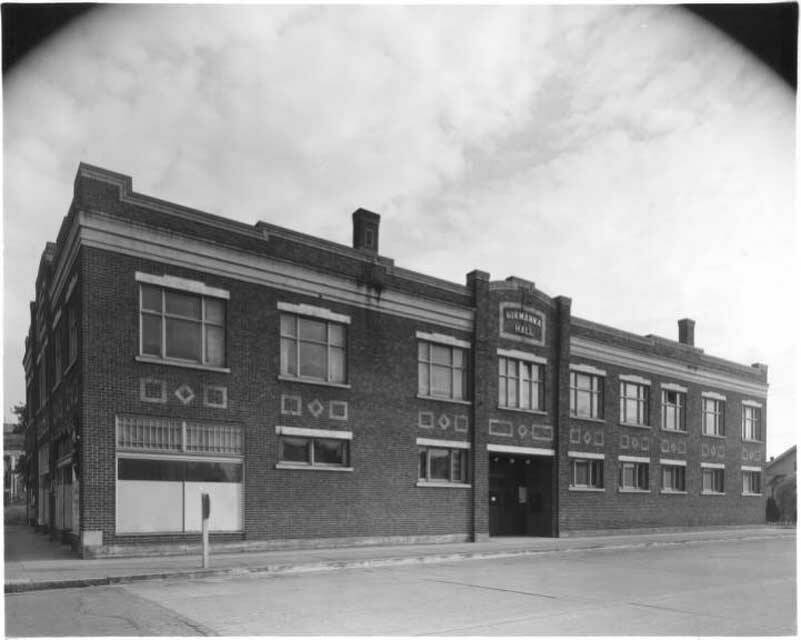By Morf Morford, Tacoma Daily Index
My mother first moved to Tacoma in the late 1920s or early 1930s. Like many from her tiny North Dakota farmtown, she saw Tacoma as the big city – a place dense with opportunity in every way, from work to entertainment and, for her and her five blond, Norwegian sisters, relationships.
In small clusters, as families and as individuals, these refugees from isolated farm towns found refuge in Tacoma where a generation or two of recent immigrants had previously found home; Tacoma’s Hilltop neighborhood.
As now, it was centered around what was then called “K” or “Kay” Street (re-christened in 1993 as Martin Luther King Jr. Boulevard – or MLK).
It was the neighborhood where all newcomers were welcome. Back then, it was primarily Italians, Russians, and of course, Norwegians.
Many of the original homes of the area show architecture (and the occasional surviving garden) of the “Old Country” roots of those immigrants.
My mother’s parents built their home (at about S 13th & Junett).
The term “affordable housing” did not exist back then.
Anyone with friends (however temporary or questionable) or family could stay somewhere.
Building materials could be scavenged or bartered for, and land was cheap. Even a short walk from downtown.
Few similar options are available today.
Downtown
Downtown (literally “down” the hill from K Street) was home to the big-name department stores, fancy restaurants, public food markets and fashionable dress shops and a variety of specialty haberdashers.
Vendors on Kay Street sold furniture, ethnic specialties, hardware, appliances (and appliance repairs), haircuts and hairdos. From Lutefisk to hand-crafted chocolate treats or “Old Country” wedding cakes, you could get it all on Kay Street.
It was the boulevard of shopkeepers, independent candy shops (Johnson’s Candy, started in 1925, still operates at 11th & MLK), bakeries and a continuing rotation of unique (and hopeful) merchants – most of whom disappeared – but some who changed their industry forever.
MLK
If you go down MLK now, you see a sparkling new rail system, with dedicated stops every few blocks.
You may have noticed that MLK, for almost its whole length, is extra wide. It was built, not only for cars, but also for the rail system that connected the neighborhood to the city at large.
From the final few years of the 19th Century to April of 1938, passenger rail cars (my mother called them streetcars – I still have several streetcar tokens she never used) were pulled by a massive underground giant steel cable that was installed to bring paying customers up 11th from downtown to K Street where they turned left (south) to 13th then down past the public food markets to A street then another left in a loop to return to the base at 11th and A.
The Normanna Hall where K Street intersects with 15th was the center of all things Scandinavian – from pancake breakfasts to holiday gatherings and union meetings.
On Sunday mornings, my mother and her family walked to one of the several Lutheran churches in the area. But on Saturday nights she and her sisters (and a few friends) would make their way just a few blocks downhill to the Tacoma Armory at 10th and Yakima.
In those pre-war years, the armory was a social hub. It was a dance hall and concert venue – among other things.
And true to form, in the everything that is old is new again cycle, the Tacoma Armory is currently a performance/event space.
I believe each one of the sisters met future husbands at the armory.
In the romantic equation of “Norwegian farm girl meets city slicker” you can imagine how well most of those relationships worked out.
My father entered the picture a few years later and, like many of the newcomers to Tacoma (especially Scandinavians) they made their way to the burgeoning Norwegian epicenter of PLU/Parkland.
Thanks to the Second World War, and for decades after, a wave of Black families came from Chicago, Kansas City and across the Midwest to work in Tacoma’s shipyards and wartime industries – or directly in the military. Most of them settled where most newcomers have always found a home; in Tacoma’s Hilltop neighborhood.
In the years since World War II, the pace and texture of the Hilltop Neighborhood has changed.
Again. And again.
The main street name has changed, and for a brief time, (2007-2011) an attempt was made to “re-brand” the entire neighborhood. Anyone remember the moniker “Upper Tacoma Business District”?
In the 1990s Hilltop became synonymous with drugs, gang violence and a notorious shoot-out or two.
Re-branding, as in hoping a name change would change anything, did not take.
From immigrant refuge to neglected neighborhood to gentrification, Tacoma’s Hilltp has seen it all.
Every neighborhood changes over time, but Tacoma’s Hilltop, I would argue, has changed the most dramatically and thoroughly – and is certainly poised to keep changing.





